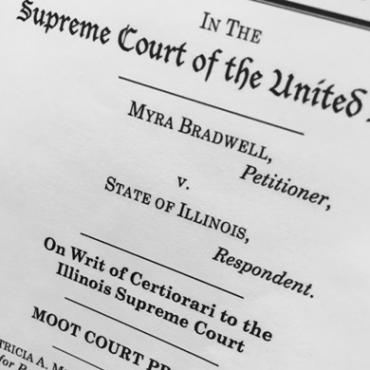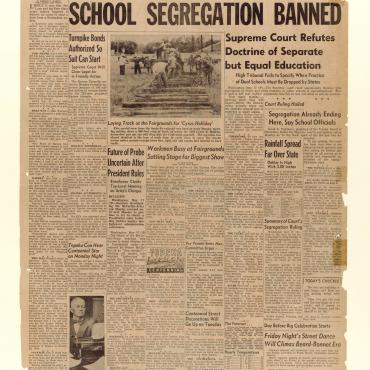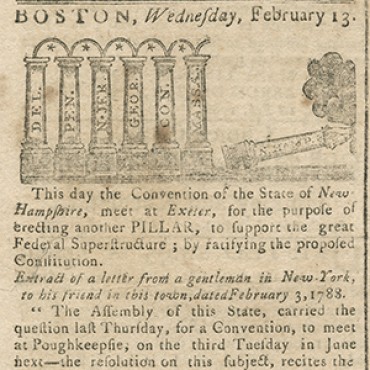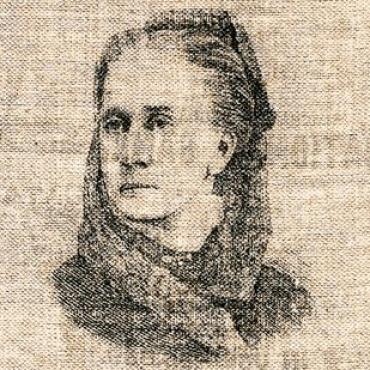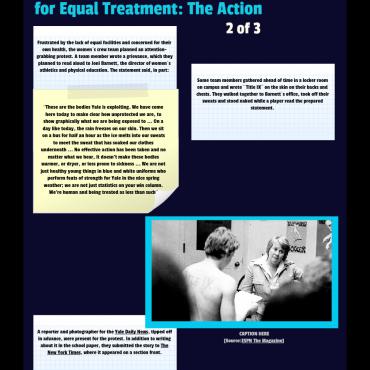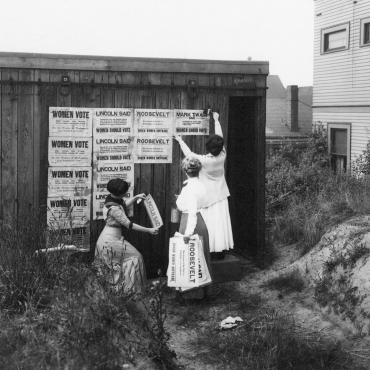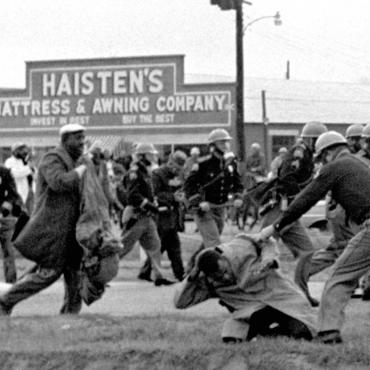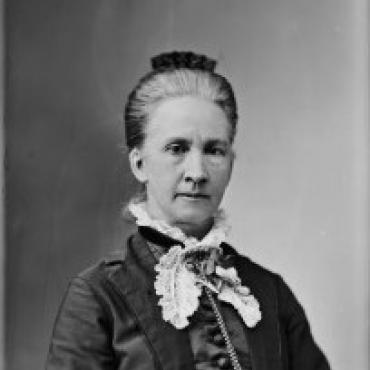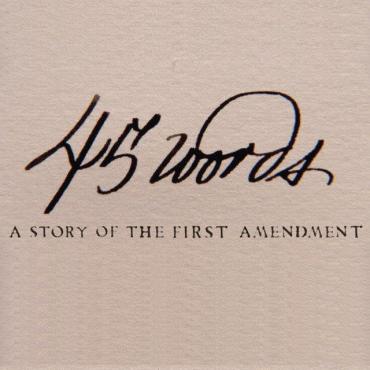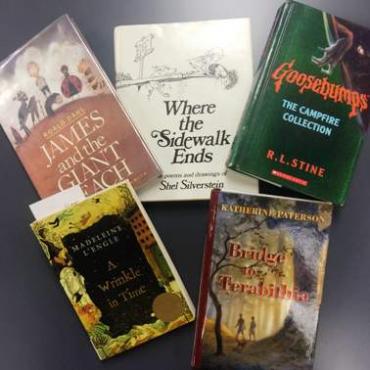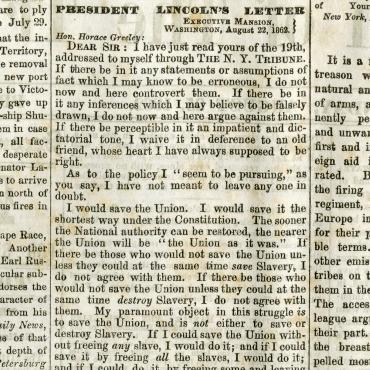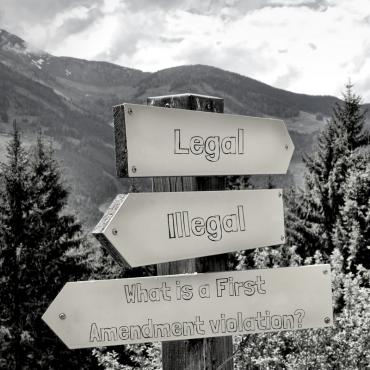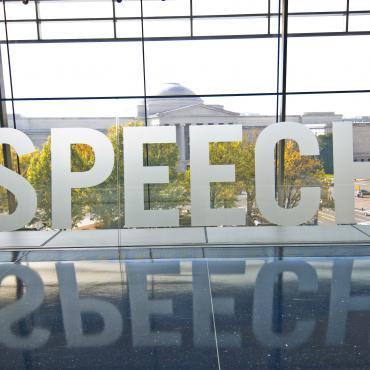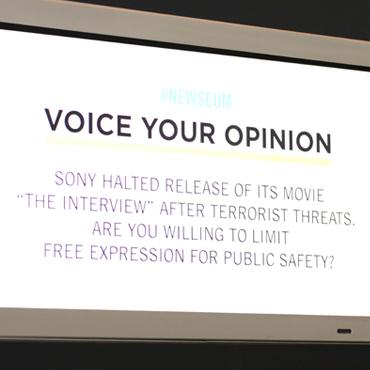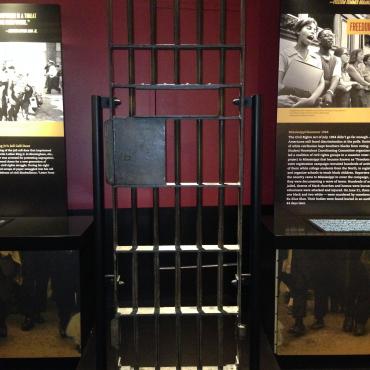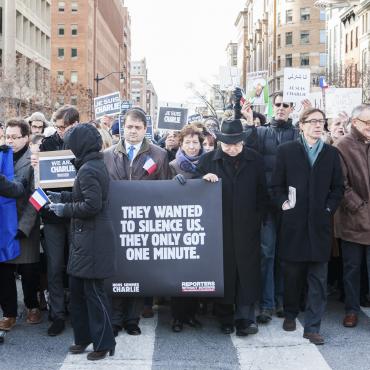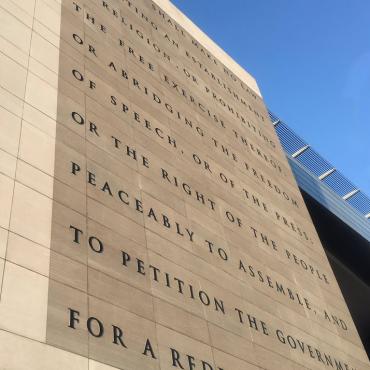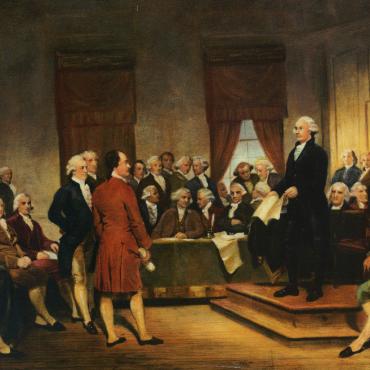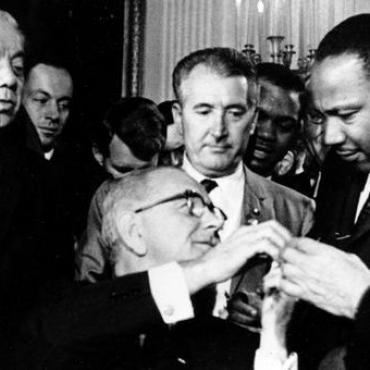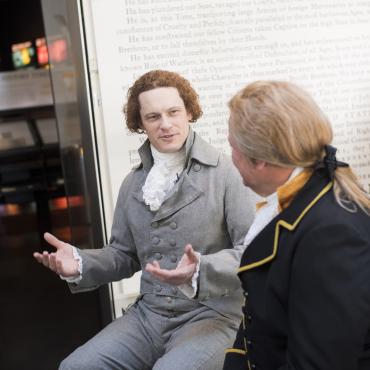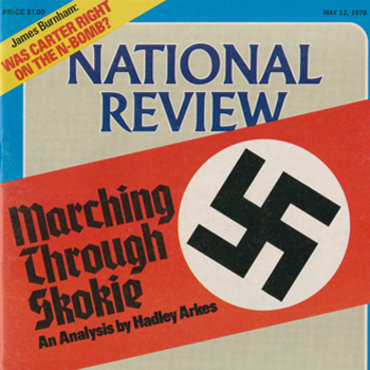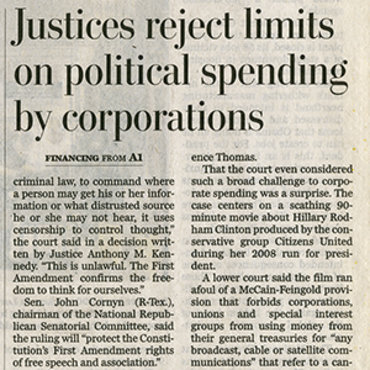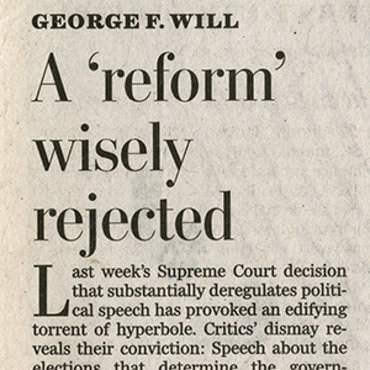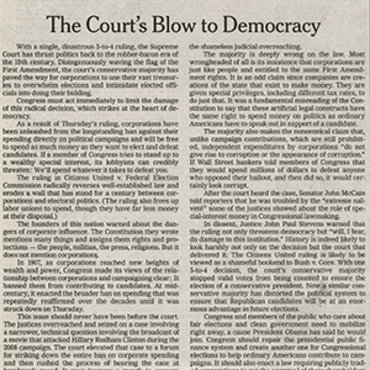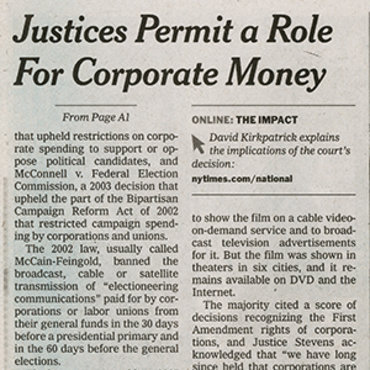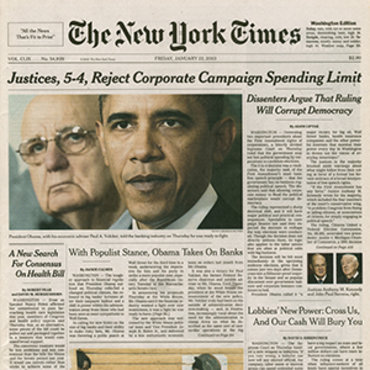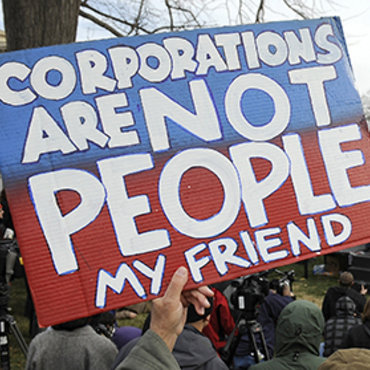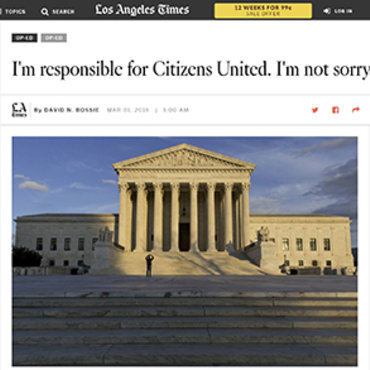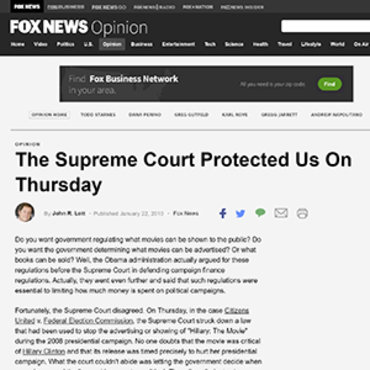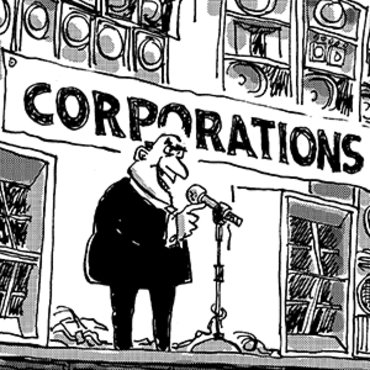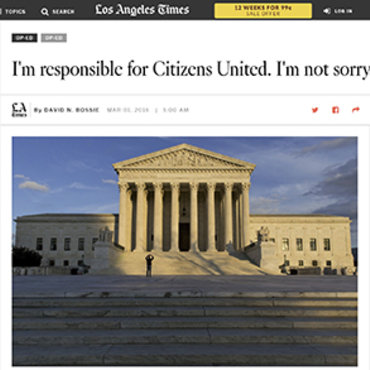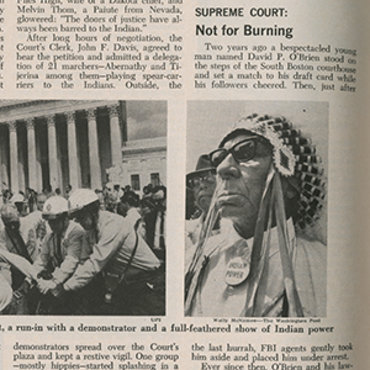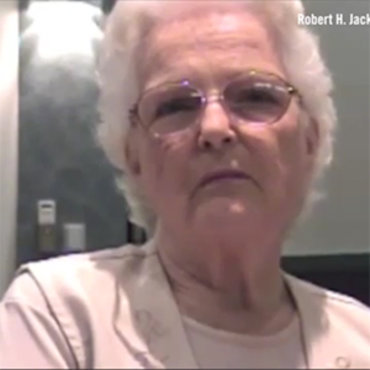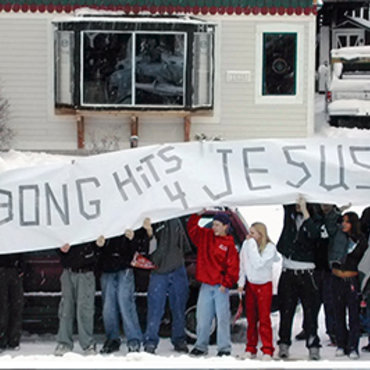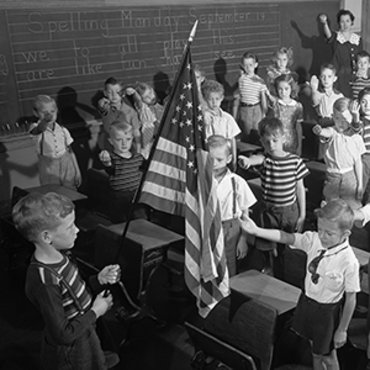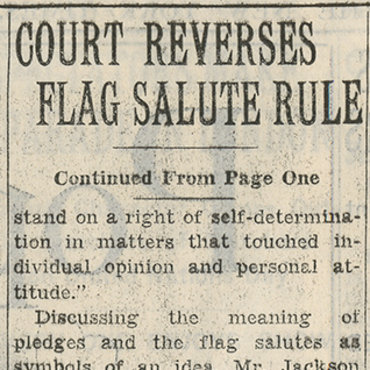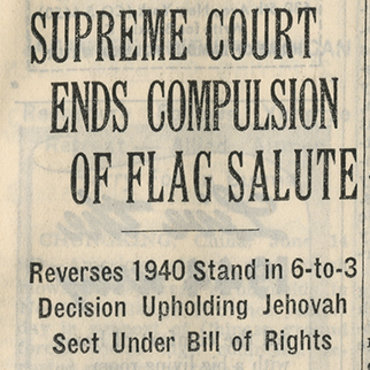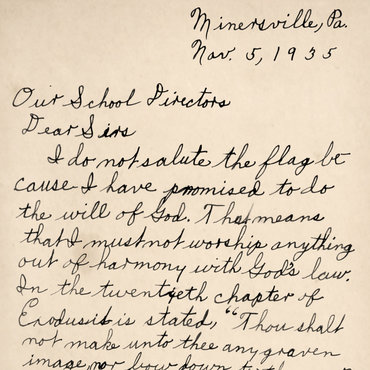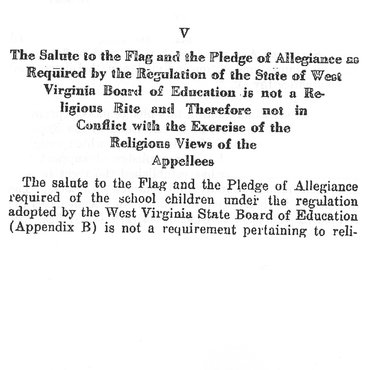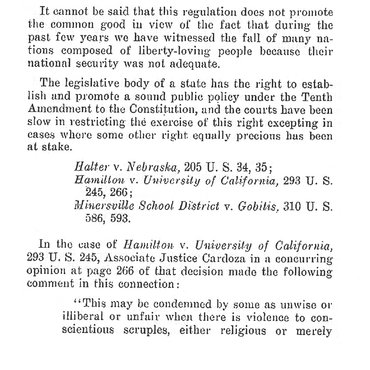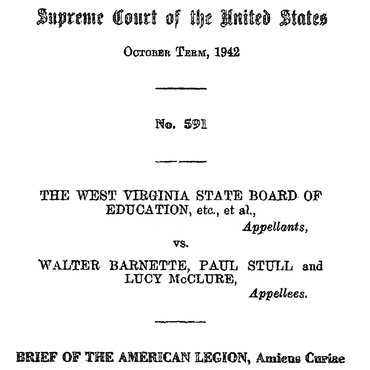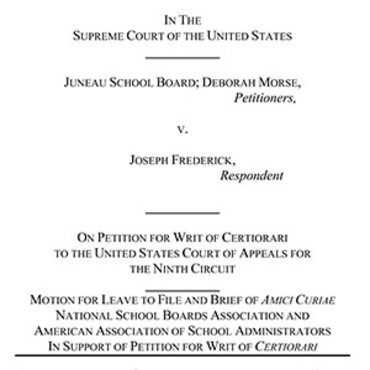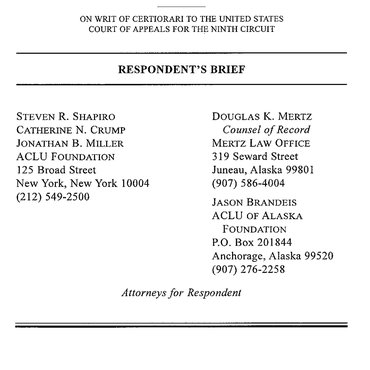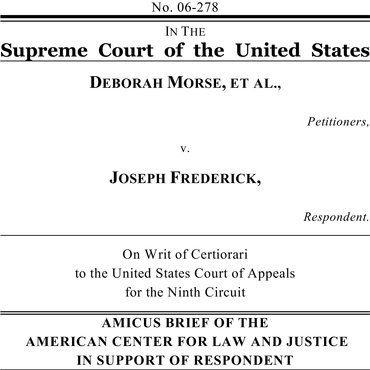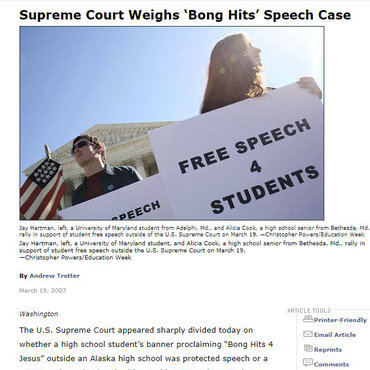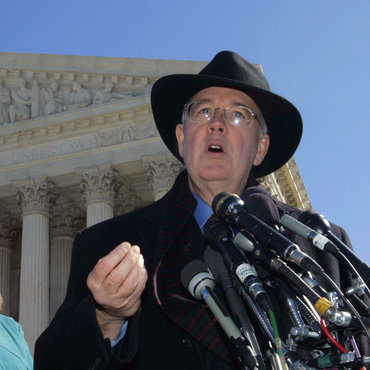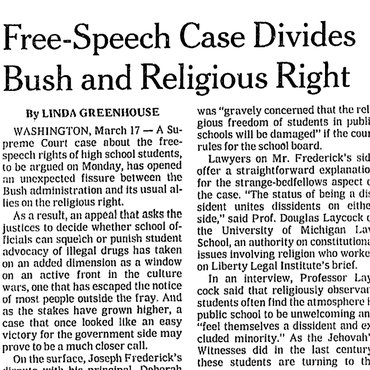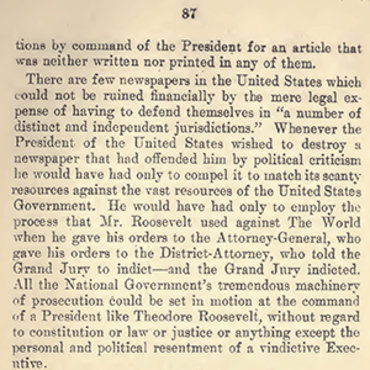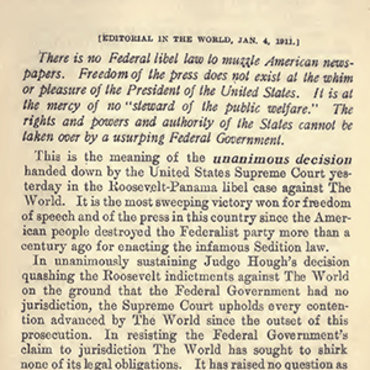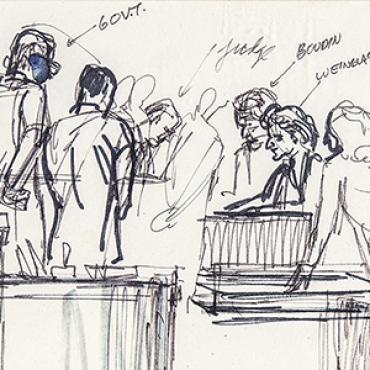You Can’t Say That in School? The Case of Lee v. Weisman
Students analyze a 1992 Supreme Court case about religion in public schools, drawing on their First Amendment knowledge to support their own conclusions about how the court should have ruled.
Get even more great free content!
This content contains copyrighted material that requires a free NewseumED account.
Registration is fast, easy, and comes with 100% free access to our vast collection of videos, artifacts, interactive content, and more.
NewseumED is provided as a free educational resource and contains copyrighted material. Registration is required for full access. Signing up is simple and free.
With a free NewseumED account, you can:
- Watch timely and informative videos
- Access expertly crafted lesson plans
- Download an array of classroom resources
- and much more!
- Constitution
- Supreme Court
- 7-12
- In advance, review the Balancing Rights: The Case of Lee v. Weisman teacher background sheet in lesson plan download. If desired, additional case background for Lee v. Weisman on Oyez: http://www.oyez.org/cases/1990-1999/1991/1991_90_1014
- Distribute the worksheet.
- Individually or in groups, have students read the summary of the case and answer the questions.
- Discuss their answers, then reveal and discuss the court’s decision. (See the accompanying teacher background sheet for more information.) Throughout the discussion, encourage students to cite cases or facts they have learned from their First Amendment studies.
- Balancing Rights: The Case of Lee v. Weisman worksheet (download), one per student
Before revealing the Supreme Court’s ruling:
- What rights are you balancing in this case?
- How should the principal defend the practice of hosting a clergy member to lead a prayer? How should the student’s father argue against it?
- Does it matter whether attendance is required to receive a diploma? What about whether requirements to stand or kneel or otherwise observe the prayer? Why? What if the prayer were led by the principal? By a student?
After revealing the Supreme Court’s ruling:
- How did the Supreme Court balance rights in this case?
- Do you agree or disagree with this ruling? Why?
- What is coercion? Why is the concept of coercion important to this case? What do you think should constitute coercion?
- Following this ruling, some public schools have chosen to have an additional graduation event where non-denominational and non-sectarian prayers led by local clergy are part of the program. What do you think about this practice?
- 1992 was more than 20 years ago. Do you think the Supreme Court would rule the same way on this case today? Why or why not?
Organize a class debate about the case. Before revealing the how the Supreme Court ruled on this case, divide the class into two; one side will argue that the Supreme Court should rule that the prayer is protected by the First Amendment; the other half will argue that the Supreme Court should rule that the prayer is not protected by the First Amendment. Break each half of the class into several small groups. Each group will present its strongest argument for or against First Amendment protection in the debate. Allow them class time to begin brainstorming arguments, or assign this as homework. In the following class period, alternate groups from each half of the class, presenting arguments for and against First Amendment protection. At the end of the debate, take a vote to see how the class would rule on the case. (You may wish to ask parents or other teachers to be a guest judge and jury.) Reveal the Supreme Court’s ruling and discuss using the questions above.
-
Center for Civic Education: CCE.III
A. How are power and responsibility distributed, shared, and limited in the government established by the United States Constitution? D. What is the place of law in the American constitutional system? E. How does the American political system provide for choice and opportunities for participation? -
Center for Civic Education: CCE.V
A. What is citizenship? B. What are the rights of citizens? C. What are the responsibilities of citizens? D. What civic dispositions or traits of private and public character are important to the preservation and improvement of American constitutional democracy? E. How can citizens take part in civic life?

